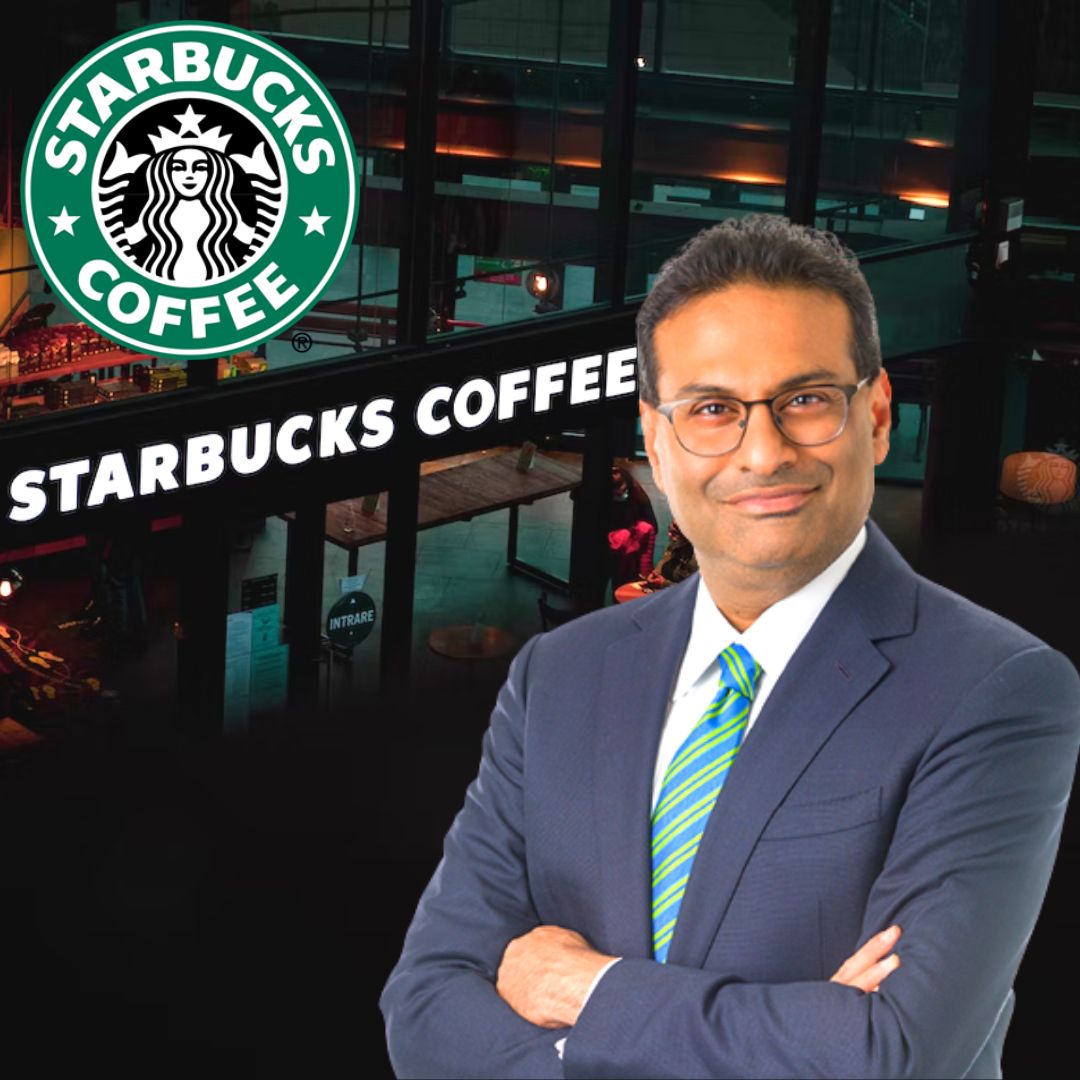Howard Schultz’s Leadership and Impact

Howard Schultz’s journey from a Starbucks employee to the iconic CEO is a testament to his entrepreneurial spirit and visionary leadership. His transformation of Starbucks from a small Seattle coffee roaster into a global coffee empire is a remarkable story of innovation, customer focus, and brand building.
Schultz’s Rise to Leadership
Schultz’s path to the top started in 1982 when he joined Starbucks as the director of marketing and operations. He was immediately captivated by the company’s unique coffee culture and the passionate community it fostered. However, he recognized the potential for Starbucks to expand beyond its Seattle roots. In 1987, Schultz led a group of investors to buy Starbucks, setting the stage for his transformative leadership.
Key Strategies for Success
Schultz’s leadership was characterized by a strategic vision that focused on creating a unique customer experience and building a strong brand identity. He implemented several key strategies that contributed to Starbucks’ success, including:
- Elevating the Coffee Experience: Schultz recognized the importance of providing a premium coffee experience. He invested in high-quality beans, developed innovative brewing methods, and created a welcoming atmosphere in Starbucks stores. This focus on quality and experience differentiated Starbucks from its competitors and cultivated a loyal customer base.
- Building a Strong Brand: Schultz understood the power of brand building. He developed a strong brand identity that emphasized Starbucks’ commitment to quality, community, and social responsibility. This brand identity resonated with customers, creating a sense of connection and loyalty.
- Expanding Globally: Schultz had a vision of making Starbucks a global brand. He strategically expanded the company’s footprint, opening stores in new markets around the world. This expansion strategy allowed Starbucks to reach a wider audience and further solidify its position as a global coffee leader.
Impact on Brand Image and Customer Experience
Schultz’s leadership had a profound impact on Starbucks’ brand image and customer experience. He created a culture of customer service excellence, emphasizing the importance of building relationships with customers and providing a personalized experience. This focus on customer service contributed to Starbucks’ reputation for quality and consistency, further strengthening its brand image.
Comparison with Other CEOs
Schultz’s leadership style can be compared and contrasted with other notable CEOs in the industry. For example, Steve Jobs, the visionary leader of Apple, shared Schultz’s focus on innovation and customer experience. Both leaders emphasized the importance of design, quality, and creating products that were both functional and aesthetically pleasing. However, Jobs was known for his demanding and sometimes abrasive management style, while Schultz was more known for his collaborative and empathetic approach.
Starbucks’ Business Model and Strategy: Ceo Of Starbucks

Starbucks’ success lies in its meticulously crafted business model, which has propelled the company to become a global coffee giant. The model centers around a unique blend of product offerings, customer experience, and strategic expansion.
Key Revenue Streams and Profit Drivers
Starbucks generates revenue primarily through the sale of beverages, food items, and merchandise. The company’s profit drivers are intricately linked to its core business model:
- High-margin beverages: Starbucks’ signature beverages, like lattes, cappuccinos, and Frappuccinos, command premium prices, contributing significantly to the company’s profit margin. The focus on specialty coffee and customized drinks caters to a growing consumer demand for high-quality, personalized experiences.
- Loyal customer base: Starbucks has cultivated a loyal customer base through its rewards program, personalized experiences, and consistent brand messaging. This loyalty translates into repeat purchases and increased revenue.
- Strategic store locations: Starbucks carefully selects high-traffic locations, often in urban centers and near universities and offices. This strategy ensures high visibility and accessibility for customers, driving foot traffic and sales.
- Efficient operations: Starbucks has optimized its supply chain and operational processes to ensure consistent product quality and cost-effective delivery. This efficiency allows the company to maintain profitability while offering competitive prices.
- Brand recognition and premium pricing: Starbucks’ strong brand recognition and reputation for quality enable the company to charge premium prices for its products. This pricing strategy contributes to the company’s overall profitability.
Competitive Advantages
Starbucks has established a strong competitive advantage in the coffee industry through a combination of factors:
- Brand recognition and loyalty: Starbucks has built a powerful brand identity associated with quality, experience, and community. This brand recognition fosters customer loyalty and attracts new customers.
- Strong customer experience: Starbucks prioritizes customer experience, offering personalized service, comfortable seating areas, and a welcoming atmosphere. This commitment to customer satisfaction contributes to repeat business and positive word-of-mouth marketing.
- Innovative product offerings: Starbucks continuously introduces new beverages and food items, keeping its menu fresh and appealing to a diverse customer base. This innovation strategy helps the company stay ahead of the competition and maintain customer interest.
- Global presence and scale: Starbucks’ extensive global network allows it to leverage economies of scale, reducing costs and increasing profitability. The company’s global reach also provides access to a wider customer base and diverse markets.
- Digital strategy: Starbucks has embraced digital technologies to enhance customer experience and streamline operations. The company’s mobile ordering and payment options, loyalty program, and online ordering platform have significantly contributed to its success.
Global Expansion Strategy
Starbucks’ global expansion strategy has been instrumental in its growth and market dominance. The company has adopted a multi-pronged approach:
- Strategic partnerships: Starbucks has partnered with local businesses and investors to facilitate market entry and navigate cultural nuances in new markets. This approach allows the company to leverage local expertise and build relationships with key stakeholders.
- Localized product offerings: Starbucks adapts its menu and offerings to cater to local tastes and preferences. This strategy involves introducing regional flavors and ingredients, ensuring the company’s products resonate with local consumers.
- Community engagement: Starbucks actively engages with local communities through partnerships with non-profit organizations and social initiatives. This approach fosters goodwill and strengthens the company’s brand image in new markets.
Challenges and Opportunities
Starbucks faces a dynamic coffee industry landscape with both challenges and opportunities:
- Competition from smaller roasters and specialty coffee shops: The rise of independent coffee shops and smaller roasters presents competition to Starbucks. These smaller players often focus on niche markets, offering unique blends and personalized experiences that appeal to discerning coffee enthusiasts.
- Shifting consumer preferences: Consumers are increasingly seeking healthier and more sustainable options, putting pressure on Starbucks to adapt its offerings. This shift in preferences requires the company to focus on ethical sourcing, sustainable practices, and healthier menu options.
- Economic and political uncertainties: Global economic fluctuations and political instability can impact Starbucks’ operations and profitability. The company needs to navigate these uncertainties strategically to maintain its growth trajectory.
- Digital disruption: The rise of online ordering platforms and delivery services presents both challenges and opportunities for Starbucks. The company needs to adapt its digital strategy to remain competitive in this evolving landscape.
- Sustainability and ethical sourcing: Consumers are increasingly demanding transparency and ethical practices from businesses. Starbucks faces pressure to demonstrate its commitment to sustainable sourcing, fair trade practices, and environmental responsibility.
Starbucks’ Corporate Social Responsibility

Starbucks has long been recognized for its commitment to corporate social responsibility (CSR), integrating ethical and sustainable practices into its business model. The company’s CSR efforts are multifaceted, encompassing environmental sustainability, ethical sourcing, community engagement, and social impact initiatives.
Sustainability and Ethical Sourcing, Ceo of starbucks
Starbucks’ commitment to sustainability is rooted in its belief that environmental stewardship is essential for long-term business success. The company has set ambitious goals to reduce its environmental footprint and promote ethical sourcing practices across its supply chain.
- Ethical Sourcing: Starbucks is committed to sourcing its coffee beans ethically and sustainably. The company’s Coffee and Farmer Equity (C.A.F.E.) Practices program promotes sustainable farming practices, fair labor standards, and environmental protection.
- Waste Reduction: Starbucks aims to reduce waste and promote recycling across its operations. The company has implemented initiatives to reduce packaging, compost food waste, and recycle cups.
- Water Conservation: Starbucks is committed to conserving water resources in its operations. The company has implemented water-saving technologies in its stores and is working to reduce its overall water consumption.
- Climate Change Mitigation: Starbucks is committed to reducing its greenhouse gas emissions. The company has set targets to reduce emissions from its operations and supply chain.
Community Engagement and Social Impact
Starbucks believes in investing in its communities and making a positive social impact. The company has a range of initiatives aimed at empowering youth, supporting local communities, and promoting diversity and inclusion.
- Youth Empowerment: Starbucks has a long history of supporting youth education and development. The company’s “Opportunity Youth” program provides training and job opportunities to young people facing barriers to employment.
- Community Grants: Starbucks provides grants to local non-profit organizations working in areas such as education, community development, and environmental sustainability.
- Diversity and Inclusion: Starbucks is committed to creating a diverse and inclusive workplace. The company has implemented programs to promote diversity and inclusion at all levels of the organization.
Challenges and Controversies
Despite its efforts, Starbucks has faced challenges and controversies related to its CSR initiatives.
- Ethical Sourcing Concerns: There have been concerns about Starbucks’ sourcing practices, including allegations of unfair labor conditions in some coffee-producing countries.
- Waste Reduction Challenges: Starbucks has faced criticism for its reliance on single-use cups and its challenges in reducing waste across its operations.
- Community Engagement Issues: Starbucks has faced criticism for its approach to community engagement, including allegations of gentrification and displacement in some areas.
Key Sustainability Initiatives
| Initiative | Goal | Achievement |
|---|---|---|
| Ethical Sourcing (C.A.F.E. Practices) | Promote sustainable farming practices, fair labor standards, and environmental protection in coffee production. | Over 1 million coffee farmers certified under C.A.F.E. Practices. |
| Waste Reduction | Reduce waste and promote recycling across Starbucks operations. | Reduced waste by 25% since 2015. |
| Water Conservation | Reduce water consumption in Starbucks operations. | Reduced water consumption per cup of coffee by 20% since 2015. |
| Climate Change Mitigation | Reduce greenhouse gas emissions from Starbucks operations and supply chain. | Achieved a 10% reduction in greenhouse gas emissions since 2010. |
The CEO of Starbucks, Howard Schultz, is a master of building brands, but even he might find inspiration in the work of screenwriter and director Brian Niccol, whose films explore the complexities of identity and societal control. Niccol’s visionary work, as detailed on his Wikipedia page brian niccol wikipedia , showcases a deep understanding of human nature and its intersection with technology, themes that Starbucks itself has explored in its own marketing campaigns.
While Schultz focuses on building a global coffee empire, Niccol’s cinematic vision offers a glimpse into the potential future of human connection and its impact on our lives.
While the CEO of Starbucks navigates the complex world of coffee and consumer trends, another figure in the fast-food industry, Brian Niccol, has also made significant strides. Brian Niccol wiki details his career trajectory, showcasing his expertise in building brands and driving innovation.
Both leaders, though operating in different sectors, share a common goal: to create a successful and sustainable business model within the ever-evolving food and beverage landscape.